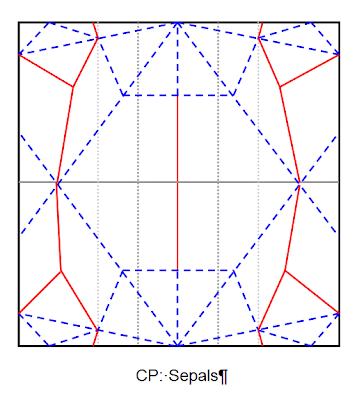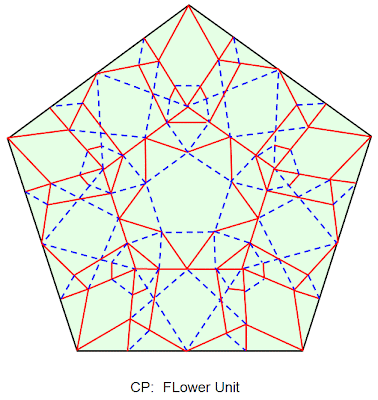


Recently, a reader requested information about one of my origami lanterns which she hoped to fold for her upcoming wedding. Unfortunately the item has not been diagrammed yet and the lid section is not an easy component for a near novice folder to fold or to put together.
I informed the reader that many kusudama models an be easily modified to become lanterns and I referred her to a kusudama of Russian origin which featured heart shapes, a theme which seemed appropriate for a wedding.
Contrary to the conventional rules of origami, that model required that the folder make cuts in the paper. I guess this cross between Kirigami (the art of paper cutting) and Origami (the art of paper folding)could be referred to as Kirorigami.
I found myself wondering if the model could be modified so that it was not necessary to make cuts in the paper. So I experimented.
I came up with the following model. It has a number of features which differentiate if from the Russian original, including the fact that it incorporates several pieces into each flower unit and that these units can be connected without glue.
The CP is included for those who can follow such things. The differently colored squares are the same size as the additional pieces required, and in approximately the same position from which they will be folded into the model. The center piece is not folded and simply sliped into the center of the flower. The corner pieces connect the flowers together. One of the photos shows how this is folded. A folded corner is folded together with a corner of the flower. This is held firmly in position when the sides of the heart shape are folded over at the back.




























